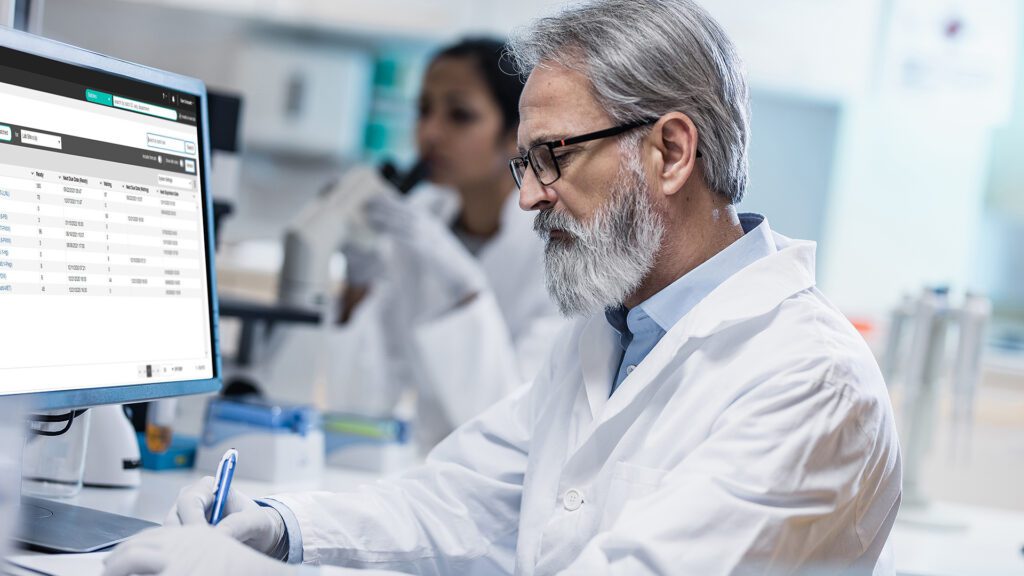
Laboratory Information Management System (LIMS) were originally designed to optimize workflows, automate routine tasks and streamline laboratory operations, thereby increasing efficiency. However, as laboratory digital transformation has progressed, the priorities of laboratories have evolved. The focus is no longer solely on efficiency; there is a growing recognition that data is the most valuable asset for LIMS software solutions to manage. The integration of LIMS and artificial intelligence (AI) has become a critical differentiator for any LIMS software solution.
The integration of GenAI into LIMS systems has facilitated sophisticated analyses, interdisciplinary collaboration and data-driven decision-making. A data-centric LIMS powered by GenAI and advanced analytics cannot only help to ensure the security of laboratory data but also its availability, integrity, and interoperability. It is no longer merely about patient- or sample-centric data, but about a holistic, data-centric approach that empowers laboratories to harness the full potential of their data. This ultimately leads to more innovative and competitive outcomes while ensuring data integrity in laboratories.
The transition from patient- or sample-centric to a data-centric approach in laboratories has been gradual yet significant. Initially, LIMS systems were developed to digitize and automate traditional paper-based processes, thereby enhancing the efficiency of laboratory operations. This approach, often referred to as “paving the cow path,” focused on replicating existing workflows in a digital format without fundamentally changing the data management practices in laboratories.
The realization that data could serve as a powerful asset, rather than merely a byproduct of laboratory operations, opened new opportunities for leveraging data-centricity in LIMS. This was further accelerated by the emergence of GenAI and machine learning (ML) technologies, which enabled the processing and analysis of vast amounts of data. GenAI and ML tools can offer pattern recognition, predictive analytics and complex modelling.
Today, laboratories are adopting GenAI and ML to exploit their data for purposes beyond operational efficiency. Data has become central to enterprise architectures, allowing laboratories to embrace data-centricity to drive innovation and maintain a competitive edge. Having the ability to extract data can help, for example, analyse trends and patterns over weeks, months or years and uncover valuable insights into laboratory operations. It can support identifying opportunities for improvement; pinpoint bottlenecks causing performance issues or even help build a business case for new resources. Ultimately, the ability to extract data empowers better data-driven decisions and strategic planning.
While the benefits of a data-centric approach are evident, the transition can be challenging, and it is therefore vital you have the right LIMS system that builds data integrity through consistent, reliable processes and robust, well-integrated technologies. When selecting a LIMS, consider a solution that offers configurable workflows, seamless integration, robust data integrity, scalability, and AI/ML integration. The Clinisys Laboratory Solution (CLS) meets these future capability requirements, providing greater efficiency, scalability, and analytical insights while reducing total cost of ownership. Data-centric laboratory computing, powered by the Clinisys Laboratory Solution, also provides the flexibility to handle data in a manner that best suits the unique requirements of any laboratory.
About Clinisys Laboratory Solution
Clinisys Laboratory Solution (CLS) is a configurable SaaS laboratory information management system (LIMS) designed to drive digital transformation in labs across multiple industries. Leveraging over forty years of experience, CLS delivers greater efficiency, scalability, and analytical insights, while reducing total cost of ownership. The industry-specific content packages within CLS support essential laboratory processes for organizations of all sizes, from national networks to small labs and fast-growing startups.